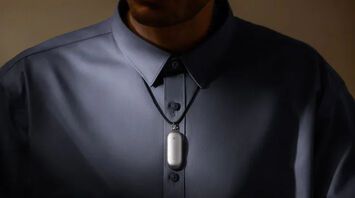Plaud NotePin Review: Modern AI Voice Recorder But Not Without Setbacks

The Plaud NotePin voice recorder is an AI-driven device, leveraging technologies like OpenAI's Whisper model and ChatGPT to transcribe, summarize, and extract important information from audio recordings. This $169 device is designed to handle various audio sources proficiently, making it a potent tool for creating summary documents from meetings, conversations, or personal notes. This is prepared by SSP.
Design and Portability
The NotePin's design resembles that of a Fitbit, which, along with its braided lanyard, wristband, and clip accessories, makes it convenient to wear and highly portable. Users can start recordings by tapping on the device's touch surface, allowing seamless integration into daily activities. The device also comes with a protective wallet-like case and charges on a compact pad.
User Experience and Interface
The NotePin pairs with a dedicated app available on both Android and iOS platforms. The app facilitates the transcription and summarization process, though it involves some manual steps like selecting templates and waiting for processing. While the system is effective, the app essentially adds another inbox for the user to manage, which could deter some potential users.
Battery Life and Performance
Plaud estimates that the NotePin offers about 18 hours of recording time or 30 days of standby. In practice, this correlates well with user experiences, clocking around four hours of recording over ten days before hitting a low battery warning.
Market Context and Competition
AI voice recording features are becoming increasingly integrated into general-use devices like iOS's Voice Memos and Google’s Pixel phones. While the NotePin offers the immediate convenience of a wearable recording device, its gradual adherence to specific platforms for productivity tasks could foresee competition from multifunctional devices like smartphones and smartwatches.
Shortcomings and Future Prospects
Despite its solid performance and design, the NotePin faces challenges. The greatest limiting factor is the need to perform additional steps within its app to manage and utilize transcriptions, which existing smartphones and smart gadgets handle more intuitively through ecosystem-wide connectivity. Users often end up having to replicate steps they'd perform on other existing devices, negating the time saved by using the NotePin primarily.
There exists potential for growth if ecosystems like those from Apple or Google allow AI devices to integrate more deeply with other apps, enabling smoother interactions without manual interventions. However, as it stands, the Plaud NotePin and similar AI gadgets might not yet be poised to replace the more digitally interconnected gadgets just yet.
Conclusion
The Plaud NotePin is attractive primarily for its design, AI-based recording efficiency, and initial low price point. However, it faces significant competition from standard tech that offers integrated, broad-based functionality. The future of standalone AI recording devices rests on their ability (or inability) to balance dedicated hardware convenience against the rapidly evolving software capabilities embedded in multifunctional devices.



















